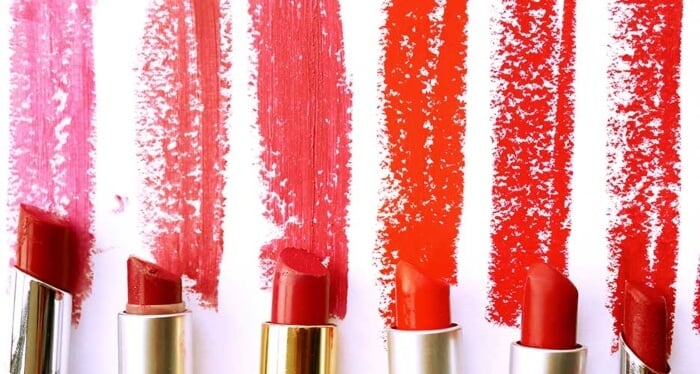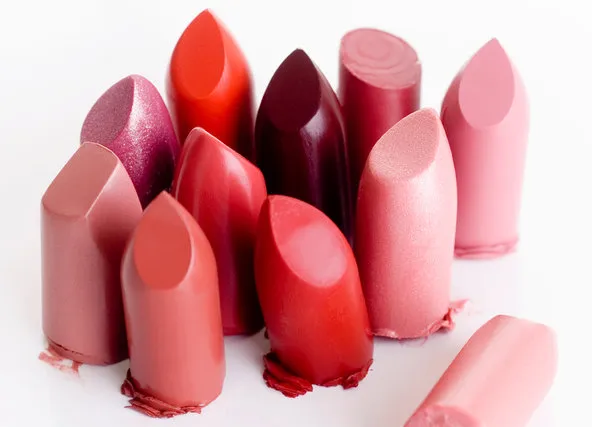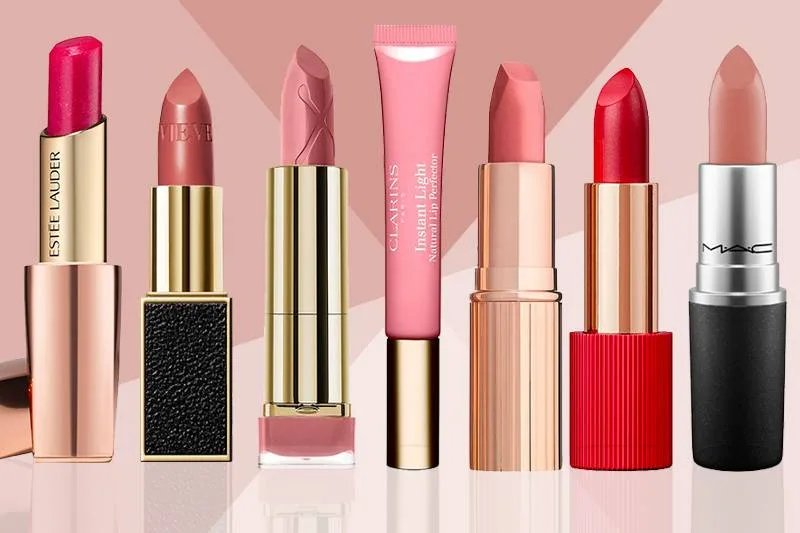News
The 10 Lipstick Mistakes That Quiet a Great Look (and How to Fix Them Fast)
Part I — Prep & Base Logic (why the canvas decides everything)
A flawless lip does not begin with a bullet—it begins with the mouth you bring to it. Texture, moisture balance, and edge clarity determine whether a shade reads luxe or fussy, polished or patchy. If you’ve ever watched the perfect color fall flat in real life—cracking at hour three, bleeding at the corners, or turning unexpectedly chalky—what you experienced was a canvas problem, not a color problem. The happy twist is that you can fix 80% of lipstick woes with a crisp, two-minute routine and a little “map-of-your-mouth” awareness. Below is your complete playbook for preparing lips so every CozyLuis texture—matte, satin, cream, gloss, stain—looks like it was formulated just for you.
1) Hydration is a timeline, not a moment
Moisture management starts well before the cap clicks open. The skin of your lips lacks oil glands; it relies on what you drink, the air around you, and the products you apply. Think in three windows:
Long-range (the week): Aim for simple consistency: drink water, avoid chronic lip licking (evaporation dehydrates), and run a bedside humidifier if your climate or AC is desert-dry. A humidifier is not glamorous, but it is the ultimate lip gloss you don’t have to reapply.
Mid-range (the night before): After cleansing, press in a humectant-first treatment (a balm or mask with glycerin or hyaluronic derivatives), then seal with a thin occlusive layer. You’re building a water reservoir that will still be present by morning.
Short-range (the morning): Apply a light, quick-absorbing balm at the start of your skincare routine—then forget it while you do everything else. Right before lipstick, blot that layer with tissue so emollients don’t dilute your pigment or cause migration. Moisture belongs in the lip, not on the surface when you apply color.
Fail-safe cue: If your lipstick slips at the corners or disappears from the center in an hour, you likely applied balm too late—or too generously.
2) Exfoliation: smooth, don’t sand
Flakes catch pigment, magnify texture, and fracture films. But aggressive scrubs create microscopic tears that make everything worse.
Gentle method: In the shower or at the sink, warm a washcloth with water and lay it over your lips for ten seconds. Then, with feather-light pressure, buff in small circles. Three times a week is plenty. If you’re on actives (retinoids, acids) or windburned, reduce frequency.
What to avoid: Gritty sugar scrubs on compromised lips, toothbrush “polishing,” or repeated pick-and-peel. These feel satisfying and look fine for ten minutes—then the sting and flakes return.
Emergency fix: If flakes persist the morning of an event, dab a tiny amount of an occlusive balm, wait five minutes, blot, then move on. Perfect is the enemy of present.
3) The perimeter halo: cancel the red ring that lies about color
Many of us have diffuse redness around the mouth—capillaries, irritation, or leftover pigment from previous lip days. That redness shifts how your brain reads a shade (nudes look chalkier, reds look messier). The fastest upgrade in all of lipdom is the concealer halo:
Tap a pin-head of your skin-tone concealer around the lip line (Cupid’s bow, corners, lower edge), then pat until invisible. Don’t paint; just erase the ring.
If you’re oil-prone, dust a whisper of translucent powder over the halo. This becomes a “dry road” that grips the edge of lipstick and slows feathering.
Skip thick foundation right up to the lip; thick base plus emollient lipstick equals mud.
Result: Edges look cleaner before you even start, and color reads truer because the red ring stopped shouting.

4) Map your mouth like a pro: three zones, three strategies
Your lip is not uniform. Think of three functional neighborhoods:
Perimeter (the border and micro-lines just outside it): prone to feathering and optical redness. Strategy: concealer halo + clear barrier pencil or nearly invisible liner.
Body (the plush, central area): where texture and comfort live. Strategy: thin, even layers; choose finish by mood and lighting.
Inner rim (the wet-dry junction): the first area to hollow when you talk, drink, or eat. Strategy: minimal product here; stain base; blot between coats.
The moment you know which zone betrays you first, you can preempt the problem. If feathering is your nemesis, solve the perimeter. If you get the dreaded “donut fade,” solve the inner rim.
5) Barrier pencils and underliners: invisible architecture
A clear, waxy barrier pencil drawn just outside the lip line acts like a speed bump; oils hesitate at that boundary. This is non-negotiable for gloss-lovers and anyone with fine lines. For everyone else, a near-invisible lip-tone liner (one tone deeper than your natural lip) laid along the edge—and lightly feathered inward—does three things at once: defines shape, prevents wander, and creates a micro-stain that outlasts lunch.
Corners first, always. Fill the V-shape of each corner before you do anything else. That’s where color hollows first.
Cupid’s bow second. Trace lightly; you’re sketching a guide so the bullet can “snap” into a crisp point.
Feather inward, not just along the line. That soft diffusion is what makes liner invisible in HD lighting.
6) SPF and the paradox of flash
If you’ll be outdoors, SPF on and around the lips matters. But mineral SPF can bounce flash and make nudes look ghostly in photos. Solutions:
Apply SPF balm earlier, blot before color, and consider a mid-value satin rather than a very pale cream if you expect flash photography later.
For daytime weddings and garden parties, build a stain base first; when SPF inevitably wears and you reapply, your anchor color remains.
7) Choose your edge language: sharp, blurred, or blended
Edge choice communicates as clearly as color.
Sharp edge: authoritative, dressy, high-impact. Best with modern mattes or disciplined satins. Use the bullet tip or a brush for the Cupid’s bow, then press lips together to align symmetry.
Blurred edge: soft, effortless, editorial. Ideal for stains, mousse-mattes, and cream-to-powder textures. Tap with fingertip to cloud the boundary; avoid heavy liner or you’ll see the seam.
Blended edge: in-between technique for days you want polish without severity—trace a hairline with liner, apply lipstick, then blur just the top micromillimeter with a clean cotton bud.
Pick one per look. A sharp lip with a glossy, migrating finish sends mixed signals; a blurred edge with a lacquered gloss can look sticky. Align edge and finish for coherence.
8) One-minute priming routine (that actually speeds you up)
Here’s the fast, repeatable sequence most people can run in under 90 seconds:
Warm damp cloth buff (10–15 seconds) if you feel texture.
Micro balm at the start of skincare; blot before color.
Concealer halo patted thinly; optional dusting of translucent powder.
Corner-first liner, then Cupid’s bow, then a faint feather inward.
First coat—thin, stay shy of the inner rim.
Blot once, not like you’re mad at it—just a press with tissue.
Second whisper-thin coat only where needed.
Finish choice: leave matte, or add a center-only veil of gloss/balm; or cloud the edges for a lived-in feel.
Run this for a week; it will become muscle memory, and your “I just threw this on” lip will look mysteriously expensive.
9) How to place product so it survives real life
Most color breakdown happens because we put the most product where life removes it fastest: the inner rim. Flip the logic:
Keep the inner 1–2 mm nearly bare of emollient product. When you press your lips together, capillary action will move enough color there without laying down a thick, dissolvable film.
If you want true all-day presence, start with a stain underlayer (apply, blot firmly, massage pigment in). Then place your satin or cream on top—thinly and away from the rim. When top sheen wears off, your stain remains.
With gloss, keep shine on the bow and center only. Edge-to-edge gloss transfers, feathers, and attracts stray hair like a magnet.
10) Nudes and the law of value
Chalky nudes are the #1 complaint we hear, and the cause is rarely undertone alone—it’s value (lightness/darkness). Your perfect nude should be about one step deeper than your natural lip, not your skin. If your lips are strongly pigmented (mauve, brown-rose), a pale beige will fight them and turn pasty. Solve it in three ways:
Choose a toasted rose or tea-rose that respects your lip depth and then blot to soften.
Neutralize with liner: a thin veil of warm or cool lip-tone liner under a difficult nude shifts value without buying a new bullet.
Prefer satin for very light nudes; matte emphasizes contrast and can turn theatrical under LEDs.
11) Reds, teeth, and undertone fidelity
If your favorite red looks brilliant in selfies but odd in meeting rooms, check the undertone against your teeth and lighting:
Blue-leaning reds visually whiten teeth and hold under cool office light.
Orange-leaning reds gleam in sun and candlelight but can warm tooth color under LEDs.
When in doubt, build a neutral base with a rose-mauve liner and apply your warm red thinly. You’ll keep its joy while canceling the “too orange under fluorescent” effect.
12) Texture mismatch: when finish, face, and fabric disagree
A glorious color can look off because the finish doesn’t match the rest of your story that day.
With matte fabrics (tweed, wool suiting) and crisp tailoring, a strict matte or velvet satin feels cohesive.
With slick or sparkly fabrics (silk, sequins, patent), a soft satin or cushion gloss balances the look so it feels curated, not chaotic.
With minimal makeup elsewhere, a lacquered lip may read louder than intended; convert to satin with a single blot.
Ask a quick question before you apply: What is the loudest surface on me right now—my skin, my clothes, or my lips? Only one should shout.
13) The lighting triad: daylight, LEDs, tungsten
Lighting determines whether your careful prep reads at all.
Daylight (indirect): the truth teller. If a shade passes here, it will pass almost anywhere.
Office LEDs (cool): flatten and cool. Matte edges look decisive; satins can read dull unless you bump chroma slightly or blot to a satin-stain.
Warm tungsten/candlelight: warms hues; blue-reds soften toward classic red, corals sing, gloss catches firelight (go light on quantity).
If you apply under bathroom downlights only, you’re guessing. Do a final half-step at a window—even five seconds changes your choices for the better.
14) The two powders that help lips (and the one that doesn’t)
Translucent setting powder through tissue: Tap the tiniest amount over a tissue laid on the lips; this marries the film without texturizing the surface. Use for events, not every day.
Soft-focus “blurring” powder around the mouth: Great for reducing shine on the halo and emphasizing lip shape by contrast.
Avoid heavy powder directly on lips: It cakes, dries, and shatters wear. If you want a cloud-matte effect, use the tissue trick, not direct powder.
15) Quiet fixes for common prep mistakes
You skipped balm and now your matte looks desert-dry: Tap a micro-dot of balm or clear gloss on a fingertip and press only the center; don’t sweep to the edge.
You over-balm’d and everything’s sliding: Blot, then lay a liner stain (light fill) before reapplying lipstick—thinly.
Your corners keep melting: Do corners first with liner and set the halo there with a breath of powder. Eat and drink with straw/utensil awareness; sounds fussy, saves your corners.
Your lip looks crooked in selfies: It’s often a lighting shadow on one side. Rebalance with a 2-mm overline on the dimmer side’s top edge—tiny, strategic, invisible in person.
16) The science of thin layers (why one swipe too many ruins the day)
Films fail in thickness. Most modern lipsticks are engineered to self-level at thin film weights. Thick coats trap volatile carriers, slow set, encourage migration, and crack when they finally dry. Two whisper-thin coats with a blot builds a stronger lattice than one heavy swipe—exactly like painting a wall. When you feel tempted to add “just a bit more,” blot instead. You’ll gain longevity without adding weight.

17) Special cases: sensitivity, actives, and seasons
Fragrance-sensitive lips: Choose fragrance-free or very low-scent bullets; keep your prep neutral (no flavored balms) so you can isolate irritants.
On active skincare (retinoids/acids): Reduce mechanical exfoliation, lean into satins and creams, blur edges, and prioritize comfort. A strict matte on compromised skin reads like a rule, not a choice.
Cold/dry season: Pre-hydrate earlier, carry a balm or gloss-oil for noon comfort, and lean satin.
Hot/humid season: Prefer stains and modern mattes; edge-control with clear barrier pencils; gloss migrates faster—use center-only.
18) Create your two-minute “pre-flight” kit
Keep these within arm’s reach so prep isn’t a project:
Slim washcloth or reusable cotton round (for the warm buff).
Lip prep balm with humectant + light occlusive (no heavy shine).
Skin-tone concealer (thin texture) and a mini translucent powder.
Neutral liner (one tone deeper than your lip) and a clear barrier pencil.
Tissue (split into single ply for blotting).
Optional: mini clear topper for center-only sheen.
With that kit, you can finesse any texture into cooperation in under two minutes, even in a restroom before a presentation.
19) Build a lip-care habit you’ll actually keep
Habits stick when they are easy and anchored to existing routines.
After brushing teeth at night: warm cloth buff + treatment balm.
While skincare absorbs in the morning: micro balm on lips.
Right before lipstick: blot balm, halo concealer, liner corners, go.
In your bag: clear barrier pencil + single-ply tissues; they rescue more situations than yet another tube.
20) Practice once, forget forever
Run the full prep sequence five days in a row with one familiar shade. Notice how your color looks better with less product and more intention. Once the sequence is in muscle memory, you won’t “do prep”; you’ll just do your lip—and it will quietly land right every time.
21) The mindset shift that changes everything
Preparation is not fussy; it’s kind. It protects your time (fewer reapplications), your attention (fewer mirror checks), and your investment (you finish bullets instead of abandoning them). A well-prepped canvas honors the shade you chose and the story you want to tell. Whether you’re stepping into a boardroom, a first date, a plane, or a Sunday errand loop, the same logic applies: hydrate early and lightly, smooth gently, erase the red ring, anchor edges, build thin. It’s simple. It’s fast. And it puts you—your words, your work, your presence—front and center, with your lipstick playing the perfect supporting role.
Part II — Application, Texture & Lighting: the 10 most common mistakes (and fast fixes)
Even the best lipstick can falter if application, finish, or environment work against it. Here are the ten mistakes that most often mute a great look—and the exact, repeatable fixes to get you back to polished in under two minutes.
1) Skipping edge prep (and blaming the bullet)
The tell: color looks messy even when you apply carefully; nudes appear “dirty,” reds bleed.
Why it happens: the micro-red ring around the mouth and natural oil at the perimeter interfere with clean edges.
Fix: run the concealer halo you learned in Part I, then dust a hair of translucent powder around the border. Trace a clear barrier pencil just outside the lip line before color. Result: instant crispness, less feathering, truer shade.
2) Loading the inner rim with product
The tell: the “donut fade”—color vanishes at the center first, especially after coffee or talking.
Why it happens: saliva, heat, and friction break down heavy films fastest.
Fix: keep the inner 1–2 mm nearly bare; let capillary transfer do the rest. For longevity, build a stain base: one thin coat, blot, press with fingertip. Add your finish on top, away from the rim.
3) Wearing the right shade in the wrong finish
The tell: a beloved color looks harsh or flat depending on the day.
Why it happens: finish changes contrast more than hue does. Matte sharpens; gloss softens; satin balances.
Fix: decide the message first (decisive / approachable / playful). If a shade feels too loud, blot to satin-stain or blur the edge. If it disappears, sharpen edges or switch to modern matte. Same color, new read.
4) Choosing a nude by skin tone, not lip tone
The tell: chalkiness, lifeless beige, or “concealer mouth.”
Why it happens: the lip’s natural pigment is deeper than the surrounding skin.
Fix: match value to your lip, not your cheek. Go one step deeper than your bare lip and choose satin over strict matte for pale nudes. If your lip pulls cool, lay a peachy liner underneath; if it pulls warm, use mauve liner to neutralize.
5) Overlining like a border, not a shadow
The tell: obvious outline, “sticker” lip effect in photos.
Why it happens: a hard, continuous dark line around the mouth reads as a frame rather than volume.
Fix: place liner only at the outer thirds and corners, one value deeper than the lipstick, then feather inward. Skip heavy overline on the lower center—fullness comes from light, so add a micro-gloss or satin highlight on the middle instead.
6) Ignoring lighting (the invisible saboteur)
The tell: looks great in the bathroom, wrong in the office; perfect at brunch, too shiny on Zoom.
Why it happens: office LEDs cool and flatten; tungsten warms; cameras compress detail and exaggerate glare.
Fix: do a five-second window check before leaving. For LEDs, prefer matte/satin with defined edges or raise chroma one notch. For warm restaurants, a satin center sheen is flattering. For webcams, keep gloss center-only or skip.
7) Applying thick coats (because “more = more”)
The tell: cracking, migration, and heavy feel by hour three.
Why it happens: modern films are engineered for thin layers; thick coats trap volatiles and break.
Fix: two whisper-thin coats with a single blot between. If you need more presence, add edge definition, not mass. For events, set through a single-ply tissue—never powder straight on the lip.
8) Fighting your natural lip color instead of editing it
The tell: corals go neon; roses turn brown; berries shift fuchsia.
Why it happens: natural lip pigment filters hues.
Fix: use temperature-correcting liner as a tint base: mauve under too-warm shades, peach under too-cool shades. Control opacity with finish—creams/satins override, stains harmonize. Aim for predictability: the tube should behave like it looks.
9) Letting gloss run the show
The tell: hair sticks, edges blur, constant touch-ups.
Why it happens: high-slip shine migrates, especially edge-to-edge.
Fix: build a stain or liner fill first; apply gloss only to Cupid’s bow and center, then press. Choose cushion gloss textures over glass-lacquer if you want plush without wander.
10) Treating touch-ups like a redo
The tell: cakey layers by 3 p.m., uneven color, frustration spiral.
Why it happens: reapplying over breakdown piles oil on oil.
Fix: run the 90-second reset: blot → trace corners with neutral liner → micro-coat only where color is missing → (optional) tap center sheen. You’ll look freshly done without starting over.
/https://cms-prod.s3-sgn09.fptcloud.com/thac_mac_muon_thuo_cua_chi_em_son_het_han_dung_duoc_khong_4_4b0f72737a.jpg)
Micro-case studies (how the fixes play out in real life)
Case 1: The boardroom red that bled by lunch
Problem: crisp at 9 a.m., fuzzy at noon.
Fix flow: Concealer halo + barrier pencil; two thin coats of modern matte red with a blot; corners filled first with liner. At lunch, blot, tap a hair of color only at the center. Outcome: same authority, zero drift.
Case 2: The chalky nude in selfies
Problem: looks sophisticated in person, corpse-y on camera.
Fix flow: Chose a nude one value deeper; swapped matte for satin; added soft liner at corners and a micro-gloss just at the bow. Outcome: lips read present and dimensional without glare.
Case 3: The coral that screams in daylight
Problem: joyful in the tube, neon on your lips.
Fix flow: laid a mauve liner wash first to cool the base; converted cream to satin-stain with a blot. Outcome: same sunshine mood, wearable harmony.
Case 4: The gloss that won’t behave at dinner
Problem: migration and smudges.
Fix flow: built a stain underlayer; used cushion gloss center-only; barrier pencil just outside the line. Outcome: plush volume, clean napkins.
A two-minute decision tree (pin this to your Notes)
What’s the room? LED office / daylight / warm evening / camera
How do I want to read? decisive / approachable / playful
Edge language? sharp / blurred
Maintenance I’ll tolerate? minimal / light / fine
Translate:
LED + decisive + sharp + minimal → modern matte, two thin coats, blot once.
Daylight + approachable + blurred + light → satin-stain (apply, blot, cloud edges).
Warm evening + playful + sharp + light → stain + satin center, micro-gloss on bow.
Camera + decisive + sharp + minimal → mid-value satin or soft-matte, defined Cupid’s bow.
Pocket fixes for stubborn moments
Feathering now: clear barrier pencil; halo with concealer; switch to satin/matte finish.
Flat color: add contrast, not product—crisp edge or center sheen.
Overdone lip: blot twice, press balm, blur edge.
Dry feel mid-day: center-only balm tap; don’t sweep to the border.
Uneven stain: re-wet with a micro-coat, blend immediately; stains need speed.
The mindset behind perfect application
Great lipstick days aren’t about perfection; they’re about coherence—canvas, finish, edge, and light telling the same story. Once you see which step broke the harmony, you can fix it fast and keep moving. Prep gets you 80% of the way there. These ten mistakes—and their small, elegant solutions—carry you the rest of the way, so the shade you love finally looks like the mood you meant.

